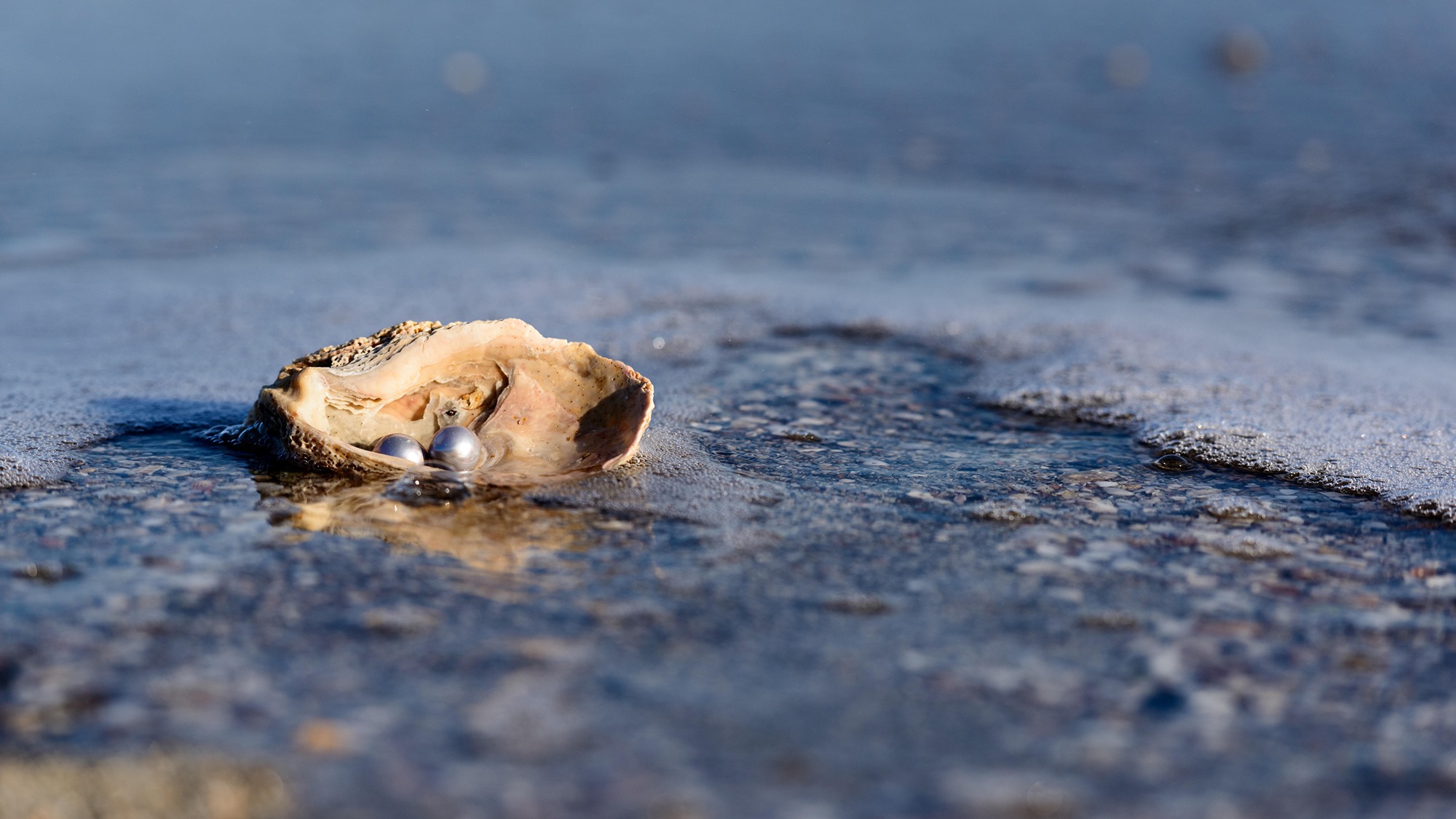How do oysters make pearls?
It has nothing to do with an errant speck of sand.

While nearly all of the world's most treasured gemstones can be found buried underground, pearls hide in a far more unexpected setting: inside a shell.
So how exactly did these iridescent jewels wind up in such an unlikely place?
Despite what many people may think, pearls aren't the result of an errant speck of sand weaseling its way inside the shell of an unsuspecting mollusk. In fact, sand (which is common in the aquatic environments where mollusks live) isn't involved at all. Instead, pearls are formed when an irritant, such as a food particle or a parasite, slips between the shells of an oyster or other mollusk and lodges into its mantle, the muscular wall where its internal organs are located. In an act of self-defense, the invertebrate oozes a liquid containing aragonite (a carbonate mineral) and conchiolin (a protein), and as the secretion intermingles with the intruder, it creates a material called nacre, or mother-of-pearl, according to the American Museum of Natural History in New York City. Over time, these layers of nacre turn into what eventually becomes a pearl.
Related: Which is rarer: Gold or diamonds?
Pearls come in a variety of colors, shapes and sizes, and much like snowflakes, no two are the same — even in the case of cultured freshwater pearls. These commercially farmed gemstones are the result of human intervention, in which a farmer implants a small bead made of shell into the interior of a mussel to kickstart the nacre-secreting process. The vast majority of pearls sold on the market today are cultured, according to the Gemological Institute of America.
The lustrous nature of pearls has made them a coveted item for thousands of years and across many cultures. In Hindu folklore, it was believed that the moon would drip dewdrops into the sea that turned into pearls, while Greek mythology professed that pearls were tears of joy shed by the goddess Aphrodite, according to the American Gem Society.
Regardless of where pearls came from, throughout history, they were often just as valuable — if not more so — as gold and diamonds, often being strung into jewelry or offered as a form of trade. Not surprisingly, pearls became associated with nobility, with Julius Caesar passing a law that only aristocrats could don pearls while in Rome, and Cleopatra dissolving a pearl earring in vinegar and drinking the brew to win a bet against her lover Marc Anthony, according to the Metropolitan Museum of Art.
Get the world’s most fascinating discoveries delivered straight to your inbox.
Today, pearls continue to captivate, thanks to their beauty and the curious nature in which they're formed.
Originally published on Live Science on Nov. 20, 2012 and rewritten on July 22, 2022.
Jennifer Nalewicki is former Live Science staff writer and Salt Lake City-based journalist whose work has been featured in The New York Times, Smithsonian Magazine, Scientific American, Popular Mechanics and more. She covers several science topics from planet Earth to paleontology and archaeology to health and culture. Prior to freelancing, Jennifer held an Editor role at Time Inc. Jennifer has a bachelor's degree in Journalism from The University of Texas at Austin.



